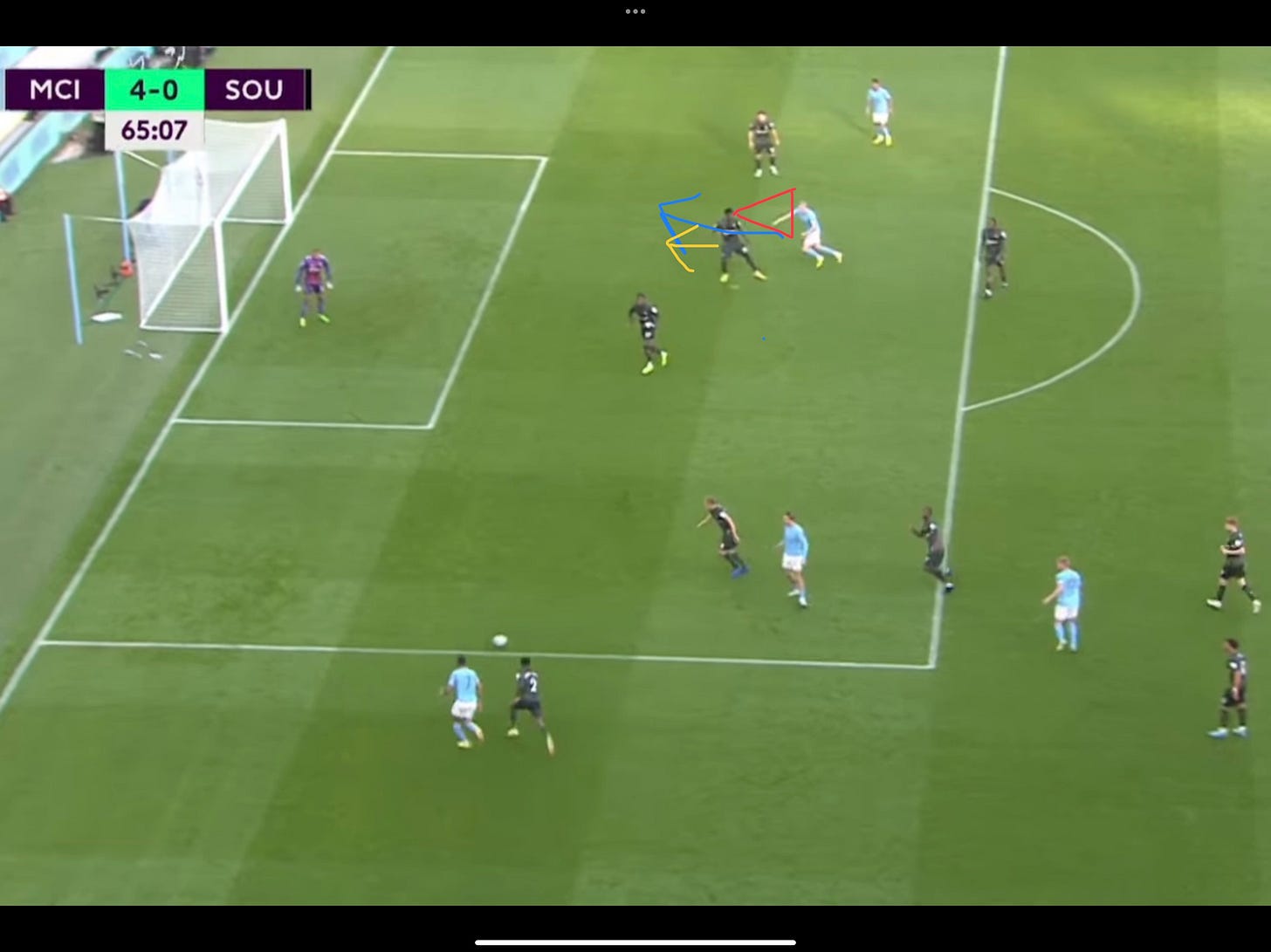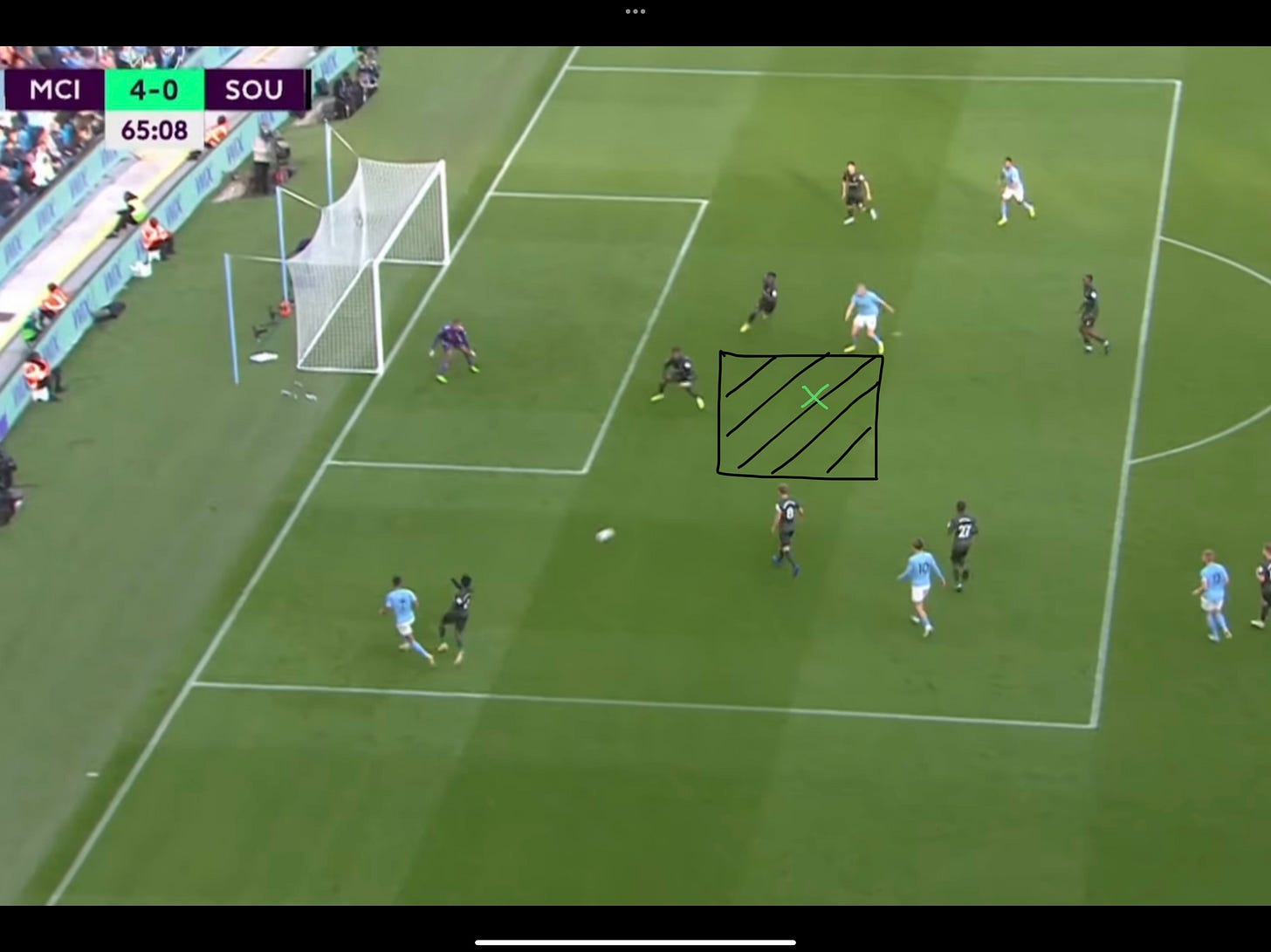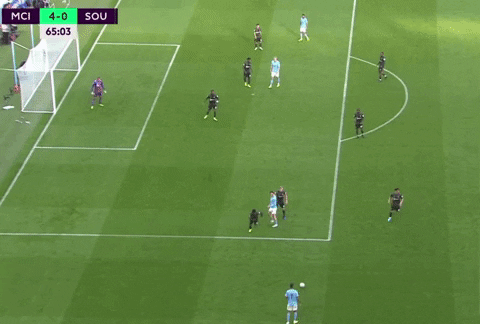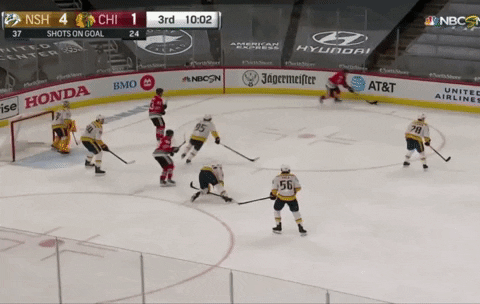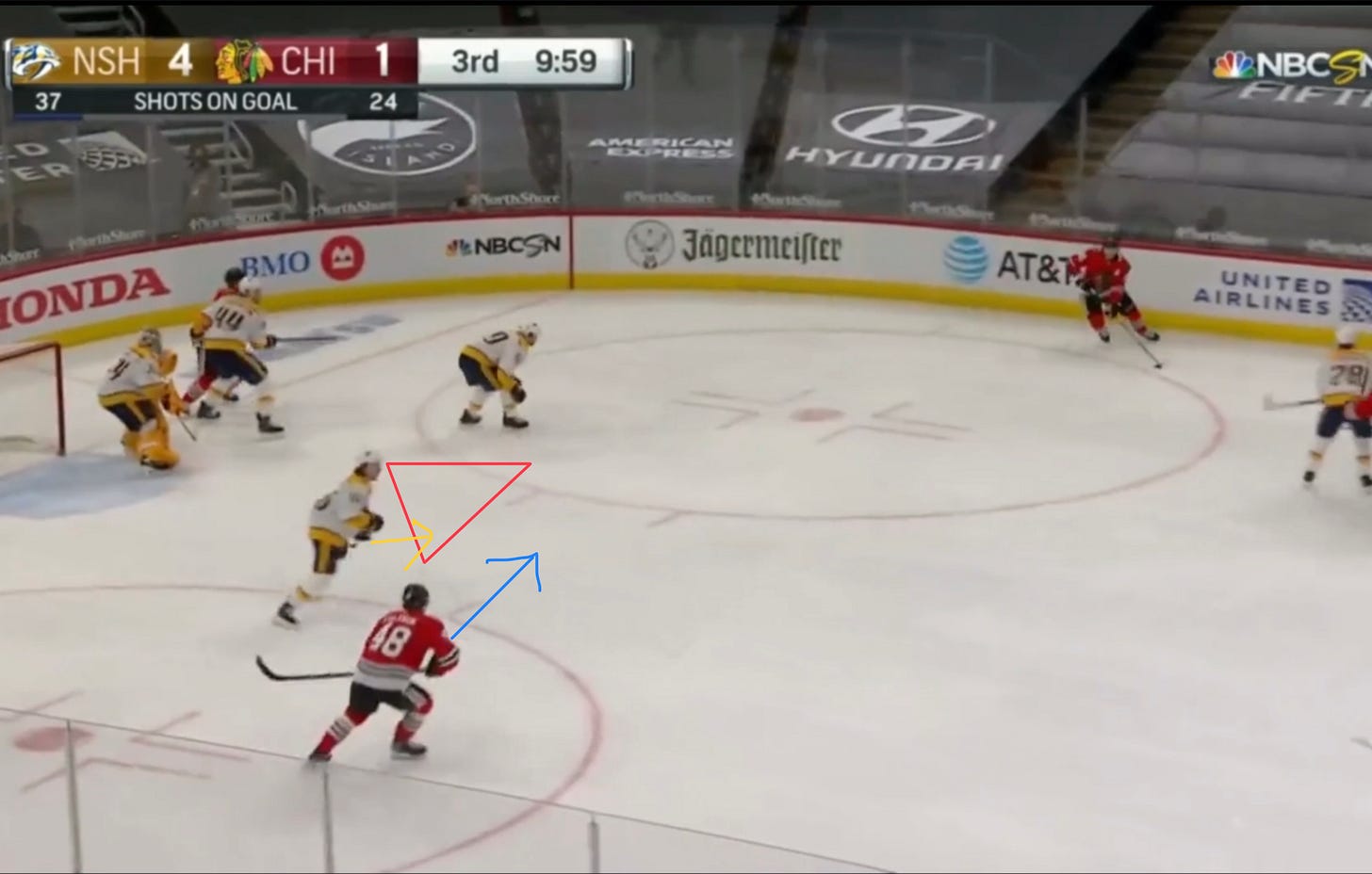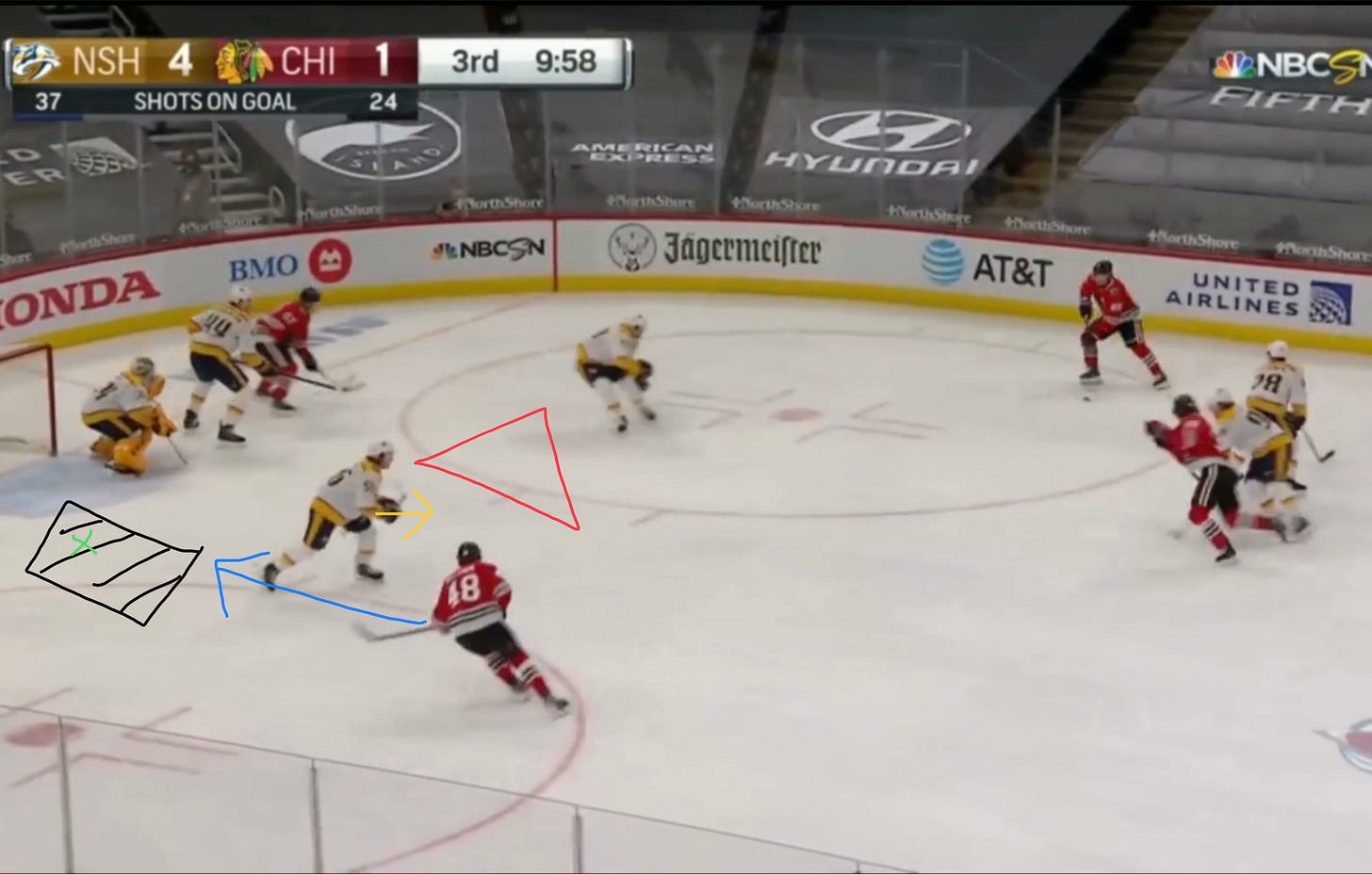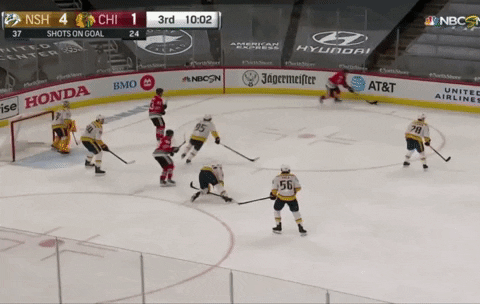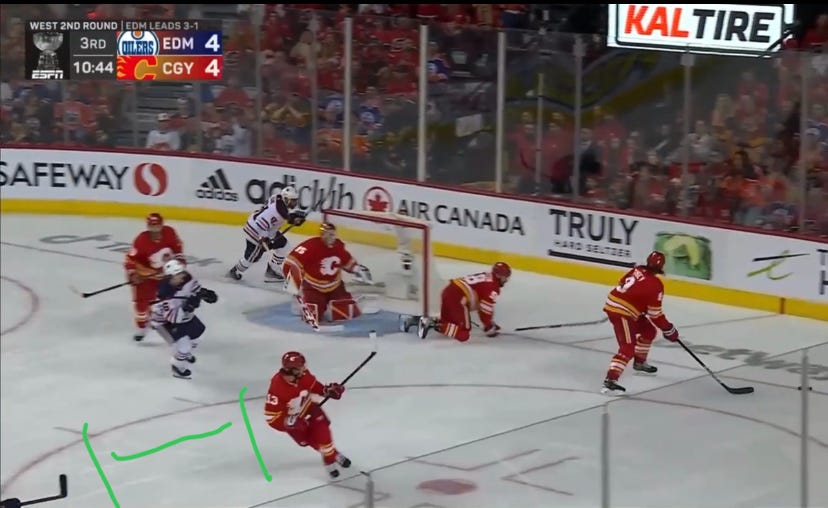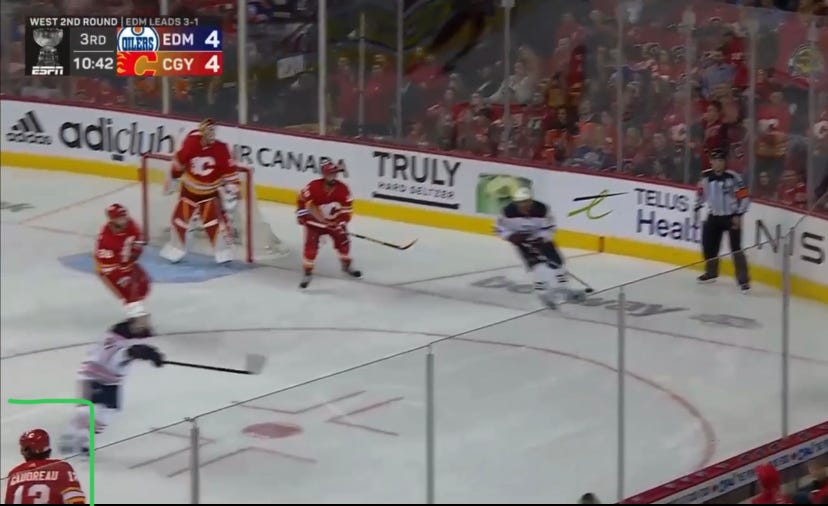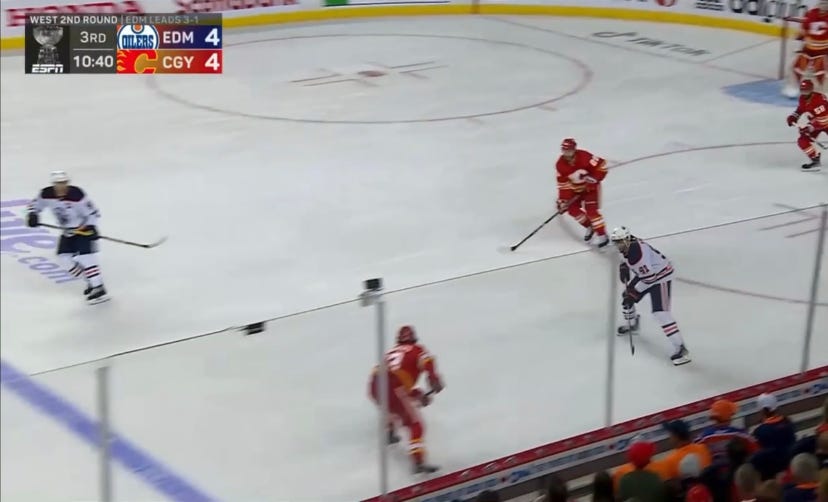Puck Acquisition: The First Move Is For The Defender; The Second Move Is For You
Deception and saving space for the right time
Before diving in, have we ever mentioned that we have a YouTube channel?! No? You should go and subscribe to that!
The Kansas City Shuffle
We can all learn a thing from the 2006 movie thriller Lucky Number Slevin. In this specific case, we can learn about the Kansas City Shuffle... The premise is simple, “they look right, and you … look left”
Show the defender one direction
They commit and look away
You go the other way
Let’s check out the KC Shuffle in practice.
Soccer Example
Frame #1 - Movement For The Defender
The defender in the box is directly facing eventual goal-scorerErling Haaland. As such, the defender is able to see and react to what Haaland is doing.
Red triangle = where the defender is looking
Yellow = Defender movement
Blue = Attacker movement
Frame #2 - Movement For You
But once the defender looks away and commits to defending the attacker’s initial move, that’s when the attacker makes their actual desired move.
Frame #3 - Space Created
In the black shaded box, this is the space available to the attacking team. If they had moved into that space early, that space would have been closed and unavailable. The green “x” is where the shot comes from.
Here is the goal at real speed:
Related: Genius movement from Erling Haaland
Hockey Example #1 - Activating Defenseman
Let’s take a look at how the same concept applies in hockey:
Frame #1 - Movement for the Defender
On the goal, we see the defender open their body orientation to better see the Blackhawks’ Wyatt Kalynuk (#48). The defender stops up so he is able to cover the space his check is theoretically heading towards.
Frame #2 - Movement for you
As soon as the defender looks back towards the puck, the attacking/activating defenseman changes direction and attacks the open space at the net.
And watching the goal again:
Hockey Example #2 - Winger breakout
This is a subtle example where the defender’s focus is on stopping the first movement. The winger is one step ahead and can create space with their thoughtful assertiveness.
Frame 1 - Movement for the Defender
We see the strong-side (puck side) winger leaving early and pushing back the defender.
The winger looks up to scan and notices the opponent closing his space.
The winger skates up ice to threaten the space behind the opponent. This pushes the opponent back to cover the threat.
Frame 2 - Movement for You
The strong side winger stops as the pass is made. The opponent defending him left the screen! Look at all the space to make the next play.
The full sequence:
Remember, when looking to create and save space for future use… do a KC Shuffle!
Further Reading
Micro movement to create space, passing lanes, and time puck receptions
Looking to attack recently vacated space is an elite individual and team tactical concept
Space Interpreter, how the ‘Raumdeuter’ creates for himself and teammates
Want to have better team play? Look at improv and how it relates to ice hockey


